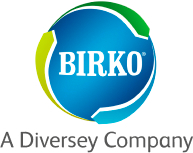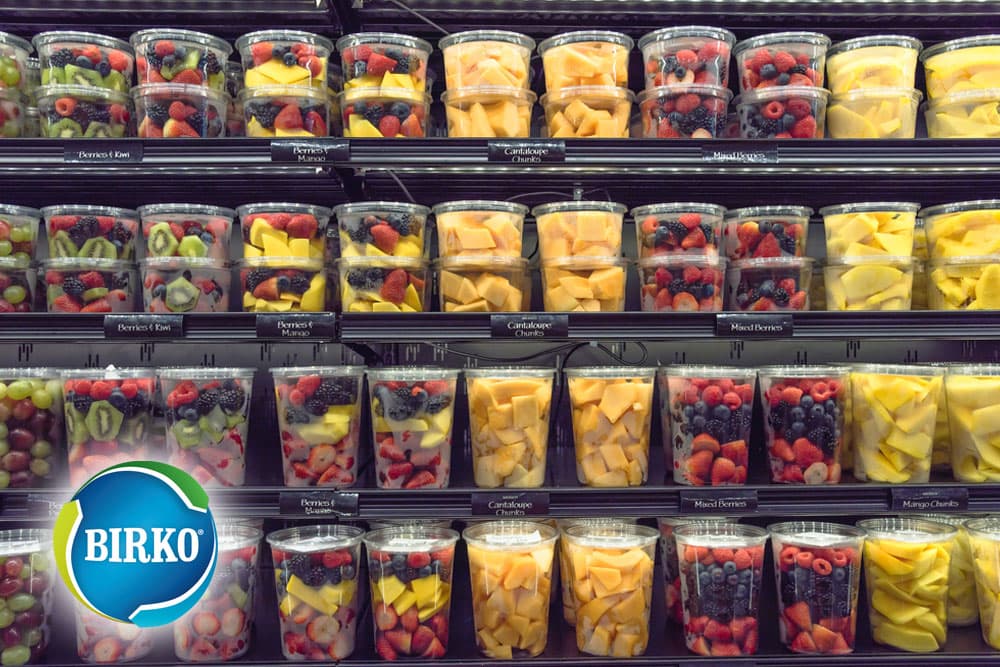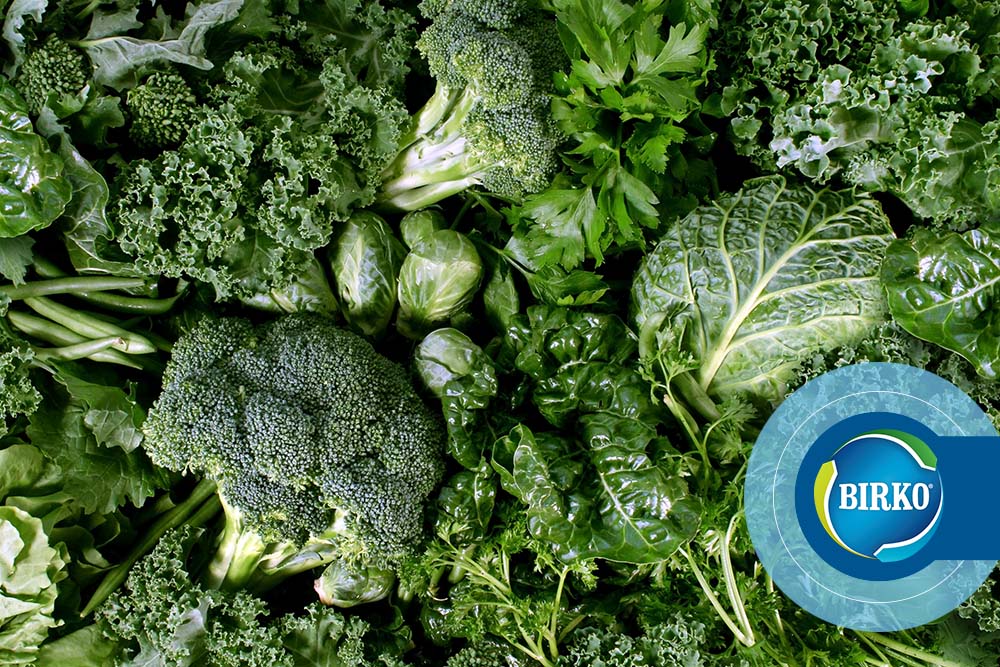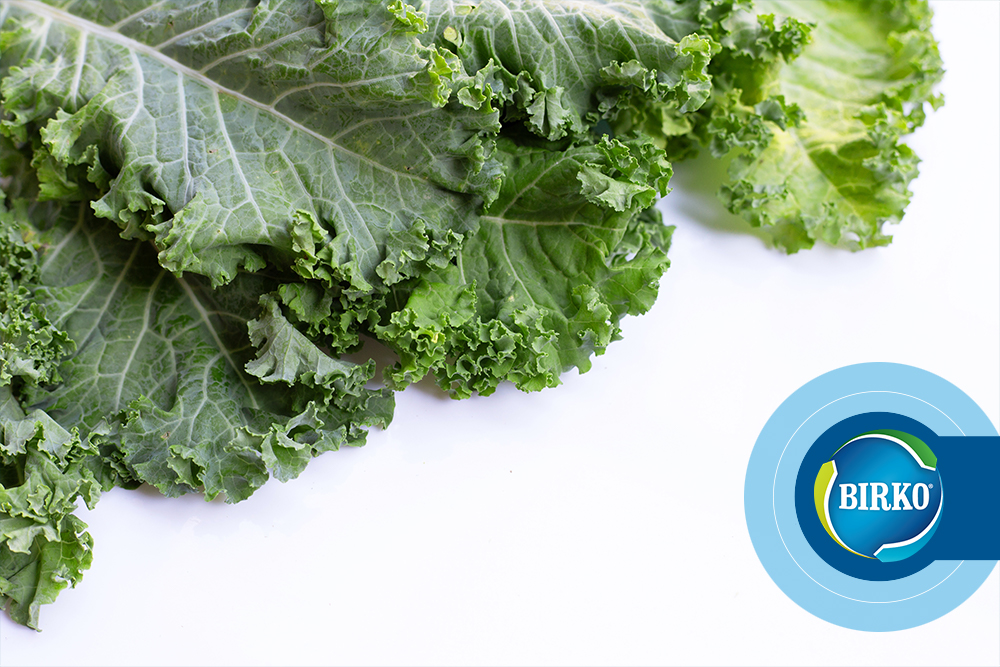Automation is revolutionizing many industries. Technology continues to evolve at a rapid pace while food manufacturers look to invest in innovations that give them an edge and help mitigate the rapidly rising labor costs.
In fresh-cut and produce processing, a significant opportunity exists for plants to implement equipment that automates sanitation processes. Why pursue this type of automation? At Birko, we see several distinct reasons for considering ways to use sanitation automation to your advantage.
1. Reducing Labor Needs and Improving Workforce Efficiency
Fresh-cut and produce processors face two significant challenges when it comes to sanitation labor. First, it can be difficult to find the right people to fill the role of sanitarian. That’s partly because a strong U.S. economy means a smaller labor pool. Beyond the tight labor market, working on a sanitation crew is a third shift job that can be grueling and monotonous. Yet, it also requires a certain level of knowledge and skill.
Sanitation automation is best applied as a way to eliminate menial tasks that human workers are currently carrying out in your food processing plant. For example, why have a worker hold a hose over a conveyor belt, spraying back-and-forth repeatedly? This is something that could easily be automated. Furthermore, machinery can be programed to make sure it cleans hard-to-reach areas of food processing equipment that humans may miss.
Once you’ve introduced sanitation automation, you can effectively operate with a smaller sanitation crew. Plus, the sanitarians you employ can focus on more valuable work. Automation even improves plant safety when it is used to keep laborers away from tasks that may present a risk of injury.
2. Conserving Resources and Cutting Costs
A major advantage of introducing sanitation automation in your plant is the data the technology provides. Fresh-cut and produce processors can use that information to gain knowledge of how resources are being used in the facility, including sanitation chemicals and water.
In the protein processing industry, we’ve seen sanitation automation lead to water savings of 30% to 50%. Using less water also contributes to reduction of overall energy costs.
Plants that install sanitation automation equipment begin using cleaning chemicals more efficiently because the chemical is dispensed precisely where it is needed at the correct concentration while avoiding wasteful overspray. We’ve seen facilities experience a 20% to 30% reduction in chemistry costs after installing our automation solutions.
Ultimately, automating the plant cleaning process improves visibility into resource usage and makes your facility more sustainable.
3. Achieving FSMA Compliance
One of the most important aspects of the Food Safety Modernization Act (FSMA) is the ability for fresh-cut and produce processors to document food safety plans. You need to provide data showing sanitation practices are being followed and proving food is safe for consumption.
Advanced automation solutions help your facility track and monitor sanitation procedures, storing information digitally so that it can be easily accessed whenever necessary.
“Our automated systems provide regular reporting showing chemical usage so you can see if it aligns with what should be used on a nightly basis,” Birko V.P. of Business Development explains. “Through further automation, you can actually make sure the chemicals went to a certain area and that the space was cleaned at a certain temperature with a certain pressure. So, there’s additional tracking that confirms whether sanitation procedures are being properly followed.”
Sanitation automation supports reliable and repeatable processes, which means you can have confidence in the cleanliness of your plant. Automation equipment never shows up late, never calls in sick and completes its task to the same quality standards virtually every time.
It’s true that there are initial costs associated with investing in sanitation automation. But, compare that to potential savings as well as avoiding the potentially devastating costs of a product recall.
Where Do You Start?
Birko does much more than provide sanitation chemistry. Our team of experts visits your facility, evaluates your situation and identifies key opportunities for sanitation best practices, including automation that improves food safety and efficiency.
Automation isn’t the answer to everything. You’ll always need some boots on the ground, keeping an eye on everything to make sure a satisfactory cleaning takes place. What Birko strongly advises against is outsourcing your entire sanitation program. Find out why when you download our free e-book, which includes information about Birko’s automated solutions.
We offer many integrated food safety and sanitation solutions for food processing plants. Find out more when you explore Birko’s customized equipment for fresh-cut and produce processors. That includes the Birko by Lagafors® Central Cleaning System and the Blend Onsite Sanitation System (BOSS). Contact us today go learn more!
 Bob Ogren, Vice President, Birko Equipment, can be reached at [email protected] or (913) 764-0321.
Bob Ogren, Vice President, Birko Equipment, can be reached at [email protected] or (913) 764-0321.









